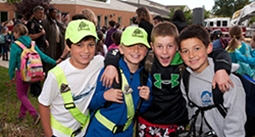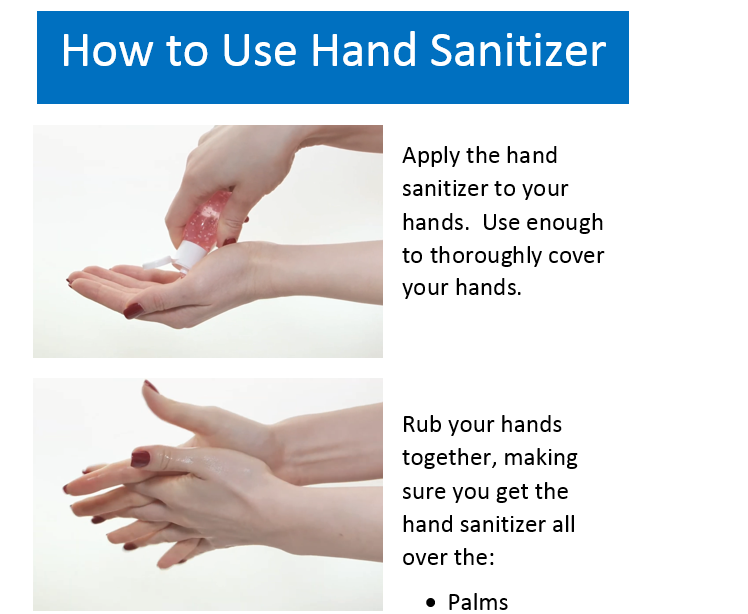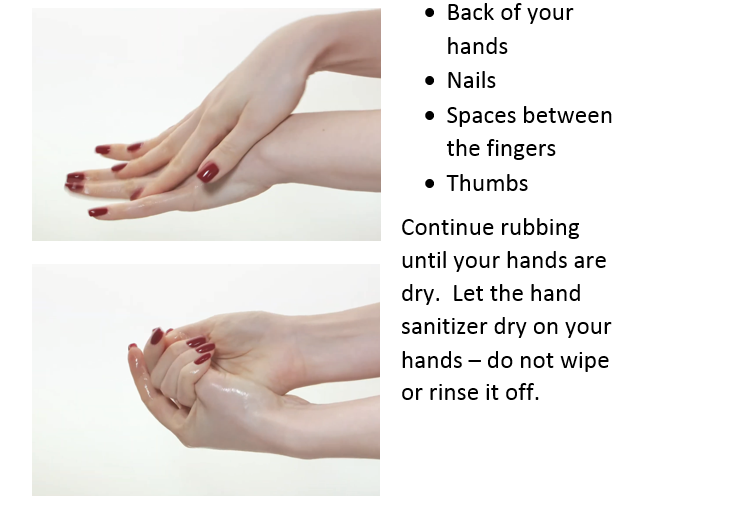 MONTGOMERY COUNTY PUBLIC SCHOOLS
MONTGOMERY COUNTY PUBLIC SCHOOLS
 MONTGOMERY COUNTY PUBLIC SCHOOLS
MONTGOMERY COUNTY PUBLIC SCHOOLS

Fire Evacuation Drill Requirements
For schools that are fully protected by automatic fire sprinklers, five fire evacuation drills are required during the school year, two of which must be conducted during the first four months of school. For schools that are not fully protected by automatic fire sprinklers, eight fire evacuation drills are required, with at least three during the first four months of school. Fire drills are not required for non-school facilities.
Schools located in these buildings, which are not fully sprinklered, are required to conduct eight fire evacuation drills annually:
The Montgomery County Fire Marshal’s Office does not allow emergency lockdown drills or directed evacuation drills to count as fire evacuation drills, and fire evacuation drills must be conducted during regular school days (not during professional days). As a best practice, the fire marshal's office recommends that fire evacuation drills take place at varying times of the school day (e.g., different class periods, during recess, during lunch periods).
Fire evacuation drills must be reported to the Montgomery County Emergency Communications Center (240-683-6520) and Ark-Alarm Systems (1-800-356-2222). To comply with fire code requirements, schools must use the School Fire Evacuation Drill Log Form to maintain a log of completed fire evacuation drills. The fire evacuation drill log must be maintained in the main office in the Fire Code Compliancy Binder (see MCPS Regulation EBA-RA, Fire Safety). Fire marshal staff review the log when conducting annual fire code compliance inspections. Additionally, schools must report all drills using the MCPS Digital Drill and Emergency Preparedness Form. Schools should contact their cluster security coordinator if they have questions about fire drill requirements.
Without exception or delay, all unscheduled activations of fire alarm systems in schools/facilities must be reported immediately to the PSCC. Dial 911 and evacuate the building. If it is determined that a false alarm has occurred and the fire apparatus has not yet arrived, call 911 to report the false alarm. PSCC personnel will determine if the alarm may be cancelled and if the building may be reoccupied prior to the arrival of fire personnel. Only the fire department has the authority to allow a building to be reoccupied once a fire alarm has been activated. Only by authority of the fire department may an unscheduled activated alarm be reset or silenced.
It is a violation of the Montgomery County Fire Safety Code, Section 22-75, to fail to call 911 and evacuate the building when a fire alarm is activated. Failure to follow the fire safety code can, and has, resulted in the issuance of a $1,000 civil citation to the administrator of the school/building.
Fire Watch Information
A fire watch is started when a building’s fire alarm system is malfunctioning or is not functioning at all. When establishing a fire watch, schools must notify the following personnel:
An administrator must assign staff members to the fire watch team. The number of staff members assigned to the team is based on the size of the building, activities that are taking place in the building, and any specific circumstances regarding the fire alarm system. The average elementary school requires three to four staff members, middle school requires four to six staff members, and high school requires six to eight staff members. This number should be increased to facilitate notification if an evacuation is necessary and the public address (PA) system is not functioning. If a sufficient number of staff members is not available for the fire watch team or if you anticipate that the fire alarm system will be out of service for four or more hours, call the Department of Facility Operations at 240-740-2300 so that arrangements can be made to send additional personnel for the fire watch team.
Each fire watch team member should be assigned a two-way radio for communication purposes. Also, if a fire watch is established for after-school/work activities, the administrator should ensure that all fire watch team members have access to a phone in the event that they need to call 911 to report a fire emergency.
Staff, students, and other building occupants must be informed that a fire watch is in place until further notice (an announcement over the PA system). Members of the fire watch team must continuously walk interior hallways and around the exterior of the relocatable classrooms. Team members should observe the following guidelines:
In the event that community-use activities will take place in the building during a fire watch, the Interagency Coordinating Board for the Community Use of Public Facilities (CUPF) office will be responsible for:
The Montgomery County Fire Marshal may modify the parameters of the fire watch depending on the circumstances. Also, Montgomery County fire code regulations require that a fire watch log be completed and maintained during a fire watch. It is recommended that the log be kept in the main office and that the administrator designates an office staff member to maintain the log. Fire watch team members should call into the school’s main office via two-way radio to give their reports every 30 minutes, and the reports must be recorded on the log as soon as received, noting the area checked, time checked, and the name of the fire watch team member who is giving the report.
Questions may be directed to Peter Park, Team Leader, Systemwide Safety Programs, Division of Facilities Management, at 240-740-7752 or via e-mail.
Unrestricted use of heat-producing appliances in classrooms and instructional and/or support rooms is prohibited within all schools. Restrictions on appliance use reduce the risk of injuries and property damage. Heat-producing appliances include the following:
MCPS restricts school use of heat-producing appliances that are not essential to the instructional program. The use of certain appliances (microwave ovens, toaster ovens, coffee machines, electric hot plates, and refrigerators) is limited to the following locations within schools:
Space heaters and dehumidifiers are permitted if approved by the Department of Facility Maintenance.
Appliances such as refrigerators and microwaves used for day-care groups, kindergarten, or child development programs to keep liquids refrigerated and then heated to a desired temperature (e.g., formula and/or milk for infants) are permitted in specific day-care rooms, kindergarten classrooms, and child development rooms. This exception includes any other appliances necessary to meet medical needs of students and staff.
Where appliances are permitted, they must be installed and operated in accordance with manufacturer recommendations and all applicable safety procedures.
Heat-producing appliances used in the instructional program (hot plates, autoclaves, refrigerators) must be obtained from the MCPS‑approved bid list.
Questions regarding this information may be directed to Peter Park, Team Leader, Systemwide Safety Programs, Division of Facilities Management, at 240-740-7752 or via e-mail.
Alcohol-based hand sanitizer (containing at least 60% ethanol or at least 70% isopropanol) may be used by MCPS students and staff to sanitize hands that are not visibly dirty or greasy when handwashing with soap and water is not feasible. MCPS schools and facilities must ensure hand sanitizer is not misused and must also comply with fire safety requirements related to alcohol-based hand sanitizers. Requirements include:
Keep hand sanitizer in the manufacturers’ containers. Do not transfer it to unlabeled bottles or other containers because people might not know what it is and some containers, which are not designed to hold hand sanitizer, can leak. For your safety and to ensure effectiveness, do not try to make your own hand sanitizer and never mix different hand sanitizers together. This can result in a mixture that does not kill germs effectively or is hazardous.
Supervise young children when they use hand sanitizer
In order to effectively kill germs, use an alcohol-based hand sanitizer containing at least 60% ethanol or at least 70% isopropanol.


You should wash your hands with soap and water, rather than using hand sanitizer alone, at certain times:
All MCPS schools are equipped with portable fire extinguishers (PFEs). PFEs should only be used by trained personnel. Additionally, MCPS discourages employees from attempting to fight fires. If a fire is observed or suspected in a building, all occupants must evacuate immediately and call 911. The county or state requires PFEs in the following locations:
PFEs are not authorized for locations, other than those listed above, in MCPS schools.
Annual inspections are conducted by a contractor; monthly inspections are the school’s responsibility. Building services should:
Contact the Division of Sustainability and Compliance at 240-740-2326 if:
A school housing a summer academic program running from 1 day to 30 days in length is required to conduct a minimum of one fire evacuation drill. A school housing a summer academic program running from 31 days to 60 days in length is required to conduct a minimum of two fire evacuation drills, with the first drill during the first 30 days and the second drill during the next 30 days. Schools that are assigned two separate summer school sessions must conduct at least one fire evacuation drill for each session.
Fire evacuation drills must be reported to the Montgomery County Emergency Communications Center (240-683-6520) and Ark-Alarm Systems (1-800-356-2222). To comply with fire code requirements, schools must use the School Fire Evacuation Drill Log Form to maintain a log of completed fire evacuation drills. The fire evacuation drill log must be maintained in the main office in the Fire Code Compliancy Binder (see MCPS Regulation EBA-RA, Fire Safety). Fire marshal staff review the log when conducting annual fire code compliance inspections. Additionally, schools must report all drills using the MCPS Digital Drill and Emergency Preparedness Form.
Schools should contact their cluster security coordinator if they have questions about fire drill requirements.
It is the responsibility of each facility’s principal/administrator to ensure staff conduct daily inspections of all exit doors, stairs, and hallways to ensure they are unobstructed, operational, and safe for use. Additionally, all employees should periodically inspect their work areas to identify and correct potential fire hazards. Specific fire safety questions/concerns should be referred to Peter Park, Team Leader, Systemwide Safety Programs, Division of Facilities Management, at 240-740-7752 or via e-mail.
Open fires and flames (such as bonfires, grilling or smoking food, candles, torches) are prohibited at MCPS facilities, with the exceptions of routine food preparation, certain science and maintenance activities, and charcoal grilling that is specifically granted on an individual basis as part of an Adopt-A-Field agreement. See MCPS Regulation EBA-RA, Fire Safety.